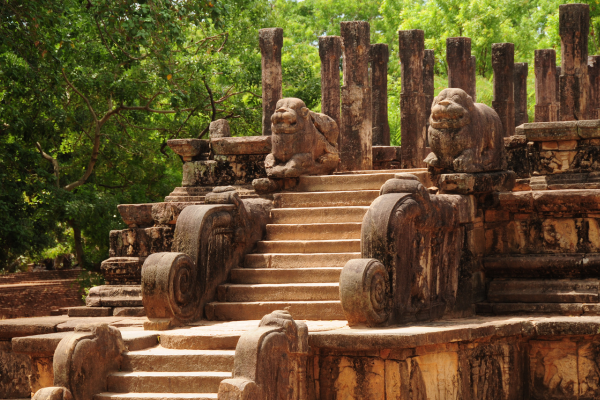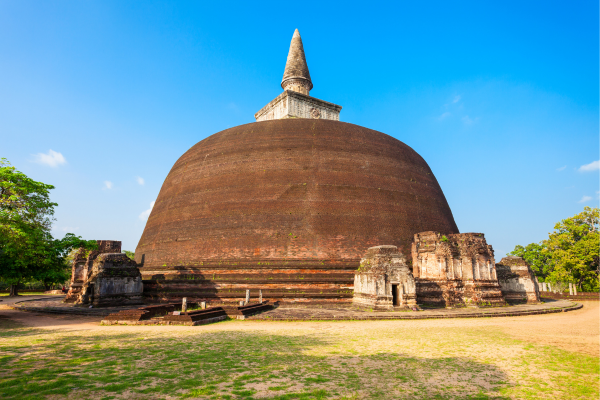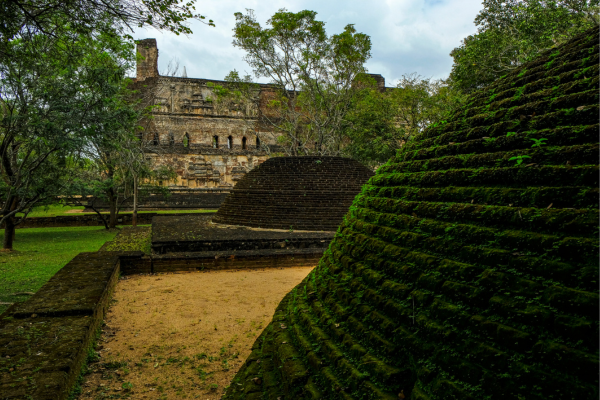Era Polonnaruwa. Part II – By Dr Tilak S. Fernando

 When ancient Ceylonese trade, industries and technology were discussed, the irrigation network was the first thing that came to mind—the old technology and self-determination. During the Polonnaruwa era, irrigation networks were prominent and considered a meritorious deed according to the Sinhala culture and tradition. When a massive lake was to be constructed, Sri Lankans always sought foreigners’ assistance (in the present circumstances), including modern equipment and their knowledge. But our forefathers constructed huge lakes with slopes up to one inch to a mile gradient with their expertise and technology in society. It meant that local industries should have existed. It is also recorded that technology to build bridges existed in the Polonnaruwa era. Our forefathers’ ability and determination make us really proud.
When ancient Ceylonese trade, industries and technology were discussed, the irrigation network was the first thing that came to mind—the old technology and self-determination. During the Polonnaruwa era, irrigation networks were prominent and considered a meritorious deed according to the Sinhala culture and tradition. When a massive lake was to be constructed, Sri Lankans always sought foreigners’ assistance (in the present circumstances), including modern equipment and their knowledge. But our forefathers constructed huge lakes with slopes up to one inch to a mile gradient with their expertise and technology in society. It meant that local industries should have existed. It is also recorded that technology to build bridges existed in the Polonnaruwa era. Our forefathers’ ability and determination make us really proud.
Old Ceylonese considered the Lake building and construction of stupas (Dagabas) as a meritorious right according to the ancient customs that existed in society. Finding a royal who did not construct a stupa was impossible. According to ancient inscriptions, the lake was the responsibility of a particular village headman and the accurate water distribution of water to the paddy fields. All repairs were to be done by villagers by Royal command.
Industries
Several talented people knew to improve industries such as the ‘gold’, precious stones, health, hide, and iron industries during the Polonnaruwa era. During the Parakramabahu era, it was recorded that even apparel was exported, and the King himself did wear locally made clothes. It was a good illustration that the apparel industry had advanced technology. It is also mentioned in the chronicles that King Parakramabahu donated cushions, pillows, mats and carpets that were the products of national handloom manufactured locally. Also, the King distributed yellow money (notes -Adikina) with his name tattooed everywhere and circulated in the country. Therefore, it shows that local industries should have existed. It is also recorded that technology to build bridges existed in the Polonnaruwa era. When King Parakramabahu, during the war with Gagaba, had to send soldiers to Anuradhapura Gariba District. He had to build a bridge across Kala Oya. and send all military ware across the newly built bridge.
History will reveal that the building construction industry became prominent during the Polonnaruwa era. Ancient ruins that exist today confirm that these ‘Watadageya’ (circular Monument), statue room, ‘Hetadageya,’ Siva Kovil, Kings Palace, and Nissanka Latha a hall took a prominent place. According to Mahavamsa, King Parakramabahu’s Palace was huge, with seven floors and ten stores. To reach one of the stores, there were escalators. At the base, there were Sandakapahanas, and on top, decorated with two lions made of stone. To see King’s subjects, there existed a hall named Waishaya Buranga. It consisted of three circular buildings. Around the staircase was a series of pictures of elephants and photographs of officers made of stone. At the centre was a stage decorated with traditional two-lion pictures.
Many industries were constructed in the Polonnaruwa era according to various seasons of the year. The following is a list of ponds: Deepa, Visraka, Tilaka Nandana, Manohara, Poorna Wardena, Pali Potha, Uthuru Thuru, Keelakarrana, Mahamevna, Raja Nara, Vanarakarana, Nirmithapura, Sansara Pala, Soma Nara, Vaarukarata, Panda Wavana, Chitra Latha Wana, Nayanussarana, Pandasaha Bara, Paaru Yana, Yann Kodi Kana, Pala Vaiwaree and Rameshwara Uyana.

Some of the small-scale canals (Weva) King Parakramabahu constructed as follows:
Magala, Situ, Yakun Thaku, Panda, Amba, Vasa, Giriba, Patala, Chandikkulama, Monara, Sadiya Gam, Thilagul, Malaval, Kulu, Ginigariri Gal, Kurugamu, Kavutharu, Jalli Ba, Uthurala, Siyambala Gam, Dawlagiriy Gam, Kira, Kalantharu, Karatta Vilan, Dibal Gam, Munararuth, Kasal, Kalala Hal, Mul Charika, Giriya Gamu and Visirathala Weva. Furthermore, King Parakramabahu repaired 460 waterways’
The total number of lakes the King had constructed was 395 King Parakramabahu had created the following industries as hideouts.
570 statues.
Visitor pavilions sixty.
Other Buildings
Theatres five.
Three-story buildings.
Thirty Dharma halls for Buddhist priests to discourse for discourses.
One hundred residencies.
One hundred and twenty libraries
Ruwanwelia Seya, Abayagiriya, Jethawramaya, Mirisavatiya and repaired Lowamahapaya, which Solis ruined one thousand five hundred bricks.
Trade & International connections.
During the Polonnaruwa era, some kings showed keen interest in trade. It was mentioned that the king had to be informed of any trade transactions. It was recorded that during this era, direct transactions were done with foreign nations, although under the Wijayabahu kingdom, increases in exports were recorded. King Parakramabahu made the country self-sufficient in agriculture. He dealt with tweed cloth, multi-coloured precious stones, different kinds of Prisms, diamonds and various perfumes mentioned in the old history books
Traders
During this period, traders who arrived in Ceylon to trade established their centres and built-up diplomatic relations with other countries. The trade was so much flourishing, and given an example of the ‘Cockbird who gets into the roof in Anuradhapura usually gets down in Polonnaruwa’ states an old saying. This was to illustrate the vast amount of trade halls in the country, it was mentioned in the ancient history books that out of the traders, there were few Ceylonese who owned ships too. It was mentioned during the Polonnaruwa period, harbours near Jaffna Dambakola Patuna, Mannar, Mahathota, North Western Province beach Mawatu Patuna, near Trincomalee Gonagama Patuna, Near Negombo Thammal Moya and down South Beach Weligama.
During the Gajaga Kingdom, the ban on Ceylonese was on those who were ready to work at Kaveri Patuna. The paddy was sold like hotcakes at Kaveri. Therefore, there was a likelihood of losing experienced farmers by going abroad as a result of which affected national agriculture was a just presumption. However, Internal exchanges took place, the king did place money transactions.
Once the Polonnaruwa era ended, politics changed towards the South. At the end of the Kalinga epoch affected change, the majesty of the first Wijayabahu, Parakramabahu, and Nissankamalla’s glory vanished. Internal conflicts and foreign threats on the island’s external political set-up as much as the nation’s economy became weaker. The glory of the Polonnaruwa era ended in 1186 and 1235.
King Wijayabahu nurtured the culture and tradition where Parakramabahu developed the country, and Nissankamalla temporarily uplifted a certain level. Still, after the invention of foreign invaders, the country’s economy was depleted, especially after the Marg, which deteriorated at the end of the Polonnaruwa era.
Courtesy: The writer translated into English from Sinhala from the Book by the late Prasad Milinda Siriwardena on Financial Analysis between BC 543 – 1832 (only sections of the book is concentrated to fit into publication).








